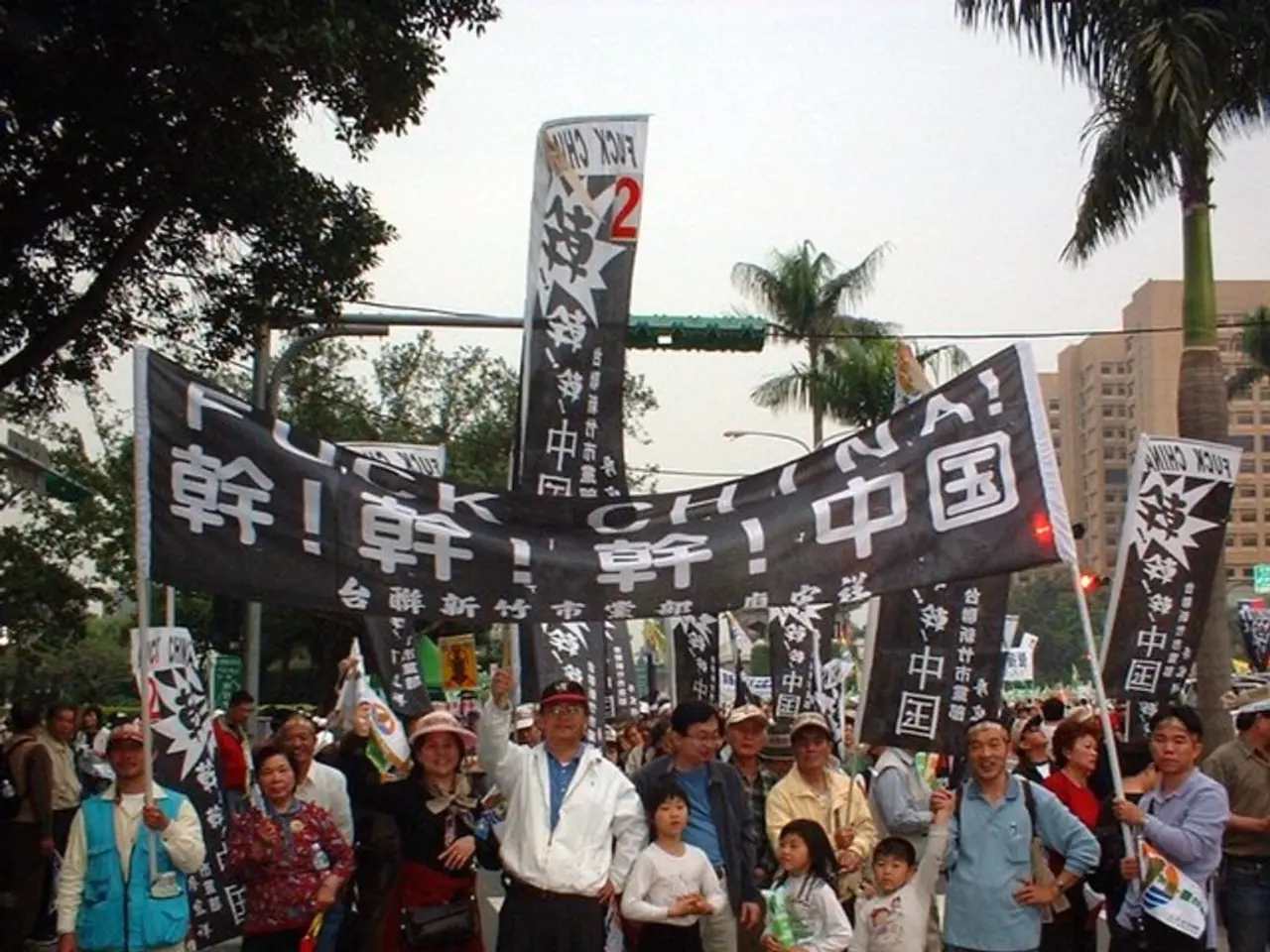Trump's alternate barrier, the "Tariff Enforcer"
In the upcoming midterm elections, there is a possibility that a Democratic majority in Congress could aim to eliminate the tariffs imposed by President Donald Trump that have caused significant disruptions to global economies.
Trump's trade tariffs were intended to serve three purposes: to force companies to move to the U.S., to generate additional tax revenues, and to put pressure on other countries in various issues, not necessarily related to trade. However, these tariffs have raised import costs, triggered inflation, and altered supply chains, with wide-ranging sectoral effects and varied country responses.
Sectoral tariffs on steel and aluminum, automobiles, copper, lumber, pharmaceuticals, and semiconductors remain in place for various countries. For instance, Canada's general tariff increased from 25% to 35% due to the lack of an agreement before August 1. The Canadian economy, according to Tiff Macklem, will not emerge unscathed from these tariffs.
Economically, these tariffs have increased consumer prices sharply, with shoe prices rising by 37% and apparel by 35% in the short run in the U.S. They have also suppressed U.S. real GDP growth by 0.7 percentage points in 2025 and reduced it persistently by 0.4% in the long run, amounting to about $110 billion annually. The tariffs have notably expanded U.S. manufacturing output by 2%, but caused declines in other sectors, such as construction (-3.5%) and agriculture (-0.8%).
Labor markets were also affected, with unemployment increasing by 0.4 percentage points and payroll employment decreasing by over half a million jobs in 2025. The tariffs have generated substantial government revenue, projected at $2.2 trillion dynamically over 2026-2035 after accounting for negative effects.
On a broader scale, tariffs ranging from 10% to 60% have created "quiet volatility" in global markets, compressing margins in manufacturing and technology sectors and forcing companies to reconsider their supply chains. Key firms like Apple are relocating portions of production from China to countries like India to bypass tariff costs, but replicating China’s manufacturing infrastructure remains difficult.
Emerging markets such as Vietnam face inflationary pressures from tariffs on commodities like steel and pharmaceuticals, straining export-dependent economies. Industries most hit include motor vehicles, pharmaceuticals, computer and communication equipment, and oil and gas, which rely heavily on imports. These sectors encounter increased tariffs raising costs, eroding margins, and forcing strategic adaptations like supplier diversification or alternative manufacturing.
Countries have responded by reshaping production and trade strategies. Firms in tariff-impacted sectors analyze earnings effects and adjust sourcing to alleviate cost burdens. Many businesses pass higher import costs onto consumers, contributing to inflationary pressures in affected markets. Central banks monitor tariff-induced price changes for economic policy adjustments, although the permanence of these effects is uncertain.
The current American policy is unsustainable in the long term, according to Alan Wolff, a researcher at the Peterson Institute for International Economics. Economies that were thought capable of defending themselves have had to accept general tariffs of 10% (United Kingdom), 15% (European Union, Japan, South Korea) or more (20% for Vietnam). The U.S. president, Donald Trump, made promises of trade tariffs during the last U.S. elections, but the full economic impact of these tariffs is still uncertain, as stated by Federal Reserve Chairman Jerome Powell.
The tariffs have been challenged in the courts, and it will take more than 10 or 20 years for economies to return to the tariffs before Donald Trump. The deal secured by Brussels has allowed it to limit damage on certain important issues, such as the regulation of digital giants.
In summary, Trump's tariffs have imposed complex economic costs and induced global supply chain reconfigurations, with notable inflation, sectoral shifts, and strategic trade responses worldwide. The long-term effects of these tariffs on global economies are still uncertain, and the resolution of this issue may depend on the outcome of the upcoming midterm elections.
[1] https://www.brookings.edu/research/the-tariff-man-how-donald-trumps-tariffs-are-hurting-the-us-economy/ [2] https://www.bloomberg.com/news/articles/2019-05-25/trump-s-tariffs-are-pushing-apple-to-move-production-from-china [3] https://www.forbes.com/sites/realspin/2019/03/07/trumps-tariffs-are-hurting-the-us-economy-and-the-american-people/?sh=51c849d560f1 [4] https://www.wsj.com/articles/trumps-tariffs-hit-u-s-consumers-and-businesses-1542288928 [5] https://www.cnbc.com/2019/03/08/trumps-tariffs-are-hurting-the-u-s-economy-and-the-american-people.html
- The tariffs imposed by President Trump have caused a ripple effect, impacting various sectors of the global economy beyond trade, leading to policy debates about their long-term consequences on culture, politics, and general news.
- As a result of Trump's tariffs, some companies are reconsidering their supply chains and political stances, potentially altering existing trade policies and legislations, which have broad implications for war-and-conflicts and geopolitical dynamics.








